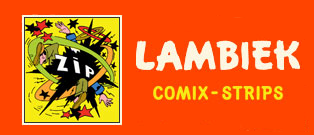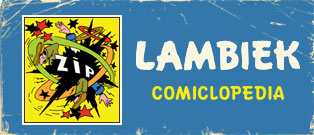'Vermaak voor de jeugd', print attributed to Dirk and Hermanus van Lubeek, showing all sorts of entertainment for the youth. Published by Franciscus Antonius Beersmans in Turnhout.
The brothers Dirk and Hermanus van Lubeek were 18th-century Dutch woodcut artists, active in the Rotterdam region. Either alone or together, they were illustrators of several educational and edifying "catchpenny prints", working for several local printers.
Life
Dirk van Lubeek was born in 1747 in Amsterdam, and died in Kralingen, a town near Rotterdam, in 1819. The Lubeek family apparently moved from Amsterdam to Rotterdam, because in 1770, Hermanus van Lubeek was born in this harbor city, where he also died in 1807. Both brothers were active as woodcut artists, working for Rotterdam printers like Johannes Scheffers, J. Hendriksen and T. L. Thompson, as well as J. Homan in Zaltbommel. Their best-remembered work was done for the so-called catchpenny prints, several of which are in the collection of the Rijksmuseum in Amsterdam.
'Het Bedorven Huishouden van Dronke Jan en Vuile Kaat' ("The Spoiled Household of Drunken John and Dirty Kate") by Dirk van Lubeek, printed by Wijsmuller in Amsterdam.
Catchpenny prints
Since the invention of printing, several European countries had a long tradition of picture story prints, meant for the entertainment and education of the poorer parts of society. In France, the so-called Épinal prints presented idealized depictions of historical events and "true stories". The Germans called them "Bilderbogen". In the Dutch speaking parts of the Low Countries, these prints reflected the religious, ethical, social and pedagogical views of their time. Known as catchpenny prints ("centsprent"), children's prints, folk prints or "little lad's papers" ("mannekensbladen"), they were mass-produced, often on cheap paper, with rudimentary artwork and text captions with simple rhymes. Often, the texts were presented in both Dutch and French language.
The early prints presented stories in a scandalous and sensational way, including depictions of boozing, carnal desires and defecation. During the 19th century, the Dutch Society for Public Welfare ("Maatschappij tot Nut van 't Algemeen") urged printers to focus on educational tales for the youth, resulting in the prints becoming more cautionary and edifying. Still, many of the tales from previous centuries remained in print, sometimes with a revised text. Even though they were aimed at the poor, the catchpenny prints reached all layers of society. Historically, the stories give an accurate account of the everyday life and beliefs of common people, revealing long-forgotten games that children used to play, school life and the many merchants that walked the streets.
During a period of about 250 years, starting in the late 17th century and lasting roughly until the 1930s, millions of catchpenny prints were sold in the Netherlands alone. Some had print runs of 500,000 copies, an impressive amount considering the fact that the Netherlands had a population of only a couple of million people at the time. Originally using woodcuts and a hand-press, the printers gradually moved on to other techniques, including wood engraving and lithography. This allowed the artwork to become more detailed and the prints to reach a higher circulation. Since they were mass-produced and not considered art, names of the actual illustrators have been lost in history. Most prints only mention the name of the printer or retailer. Still, the origin of many prints remain unknown, as printing blocks were often resold, leading to many reprints. Only a couple of Dutch catchpenny prints have included the initials or full names of the actual woodcutter or engraver. Among the known names are Alexander Cranendoncq, Jan Christoffel Jegher, Dirk and Hermanus van Lubeek, Hendrik Numan and Jan and Gerrit Oortman.
Catchpenny print by Hermanus van Lubeek showing all kinds of professions.
Lubeek prints
Many of the catchpenny prints by Hermanus van Lubeek can be identified by the initials "HVL" or the signature "H. V. Lubeek". Prints signed with only "Lubeek" are generally attributed to Dirk van Lubeek, or considered a collaboration between the two brothers. Some of the prints by Dirk van Lubeek have the initials "DVL". While catchpenny prints generally have a layout of 16 panels, the Lubeek prints vary in length from one single image up to 24 images. Most of their prints show seasonal town views, royalty or overviews of different types of professions, musical instruments or animals. A more extensive print by Dirk van Lubeek showed a series of dwarf-like musicians, all playing a different instrument, such as violin, trumpet, flute, horn, bagpipes, cello, clarinet, harp and drums. Hermanus created an insightful print about the many 18th-century street merchants and other entrepeneurs ('Verschillende Neeringen'), including salesmen of maps, rags and scrap iron, a "magician", someone hosting a shell game, as well as long-forgotten professions like a tinker and a knife grinder. Each had their own cry to promote their goods. Another print by Hermanus shows eight types of beggars with various physical disabilities. Their daily activities are described in rhyme.
Some of the musicians portrayed by Dirk van Lubeek.
A print by Dirk van Lubeek showed 18 visualizations of agriculture, fishing, hunting and winter entertainment. A single-panel print by Dirk van Lubeek visualized the "stages of old age" as a flight of stairs with a character growing older on each step. A more moralistic print by Dirk van Lubeek showed the farcical life of a debauched couple, 'Het Bedorven Huishouden van Dronke Jan en Vuile Kaat' ("The Spoiled Household of Drunken John and Dirty Kate"). Jan drinks, while Kaat sweeps, spins and sits by the fireplace. When Jan comes home, he finds no food ready or food that is only half cooked. As the couple fights, Jan begins an affair with another woman. Jan calls his wife a drunkard, and she calls him a whore. Kaat sues Jan in court and wants to divorce him. When Jan hears this, he throws his wife out of the house.
Besides making prints, Hermanus van Lubeek was also the author of the booklet 'Aangenaam Allerlei Voor De Jeugd' (G.B. van Goor, 1848), a picture book with on each page a hand-colored image of a profession or activity, accompanied by the title and a four-line verse.
'Trap des Ouderdoms', presenting the stages of old age, by Dirk van Lubeek, printed in Turnhout by Glenisson & Zonen.







